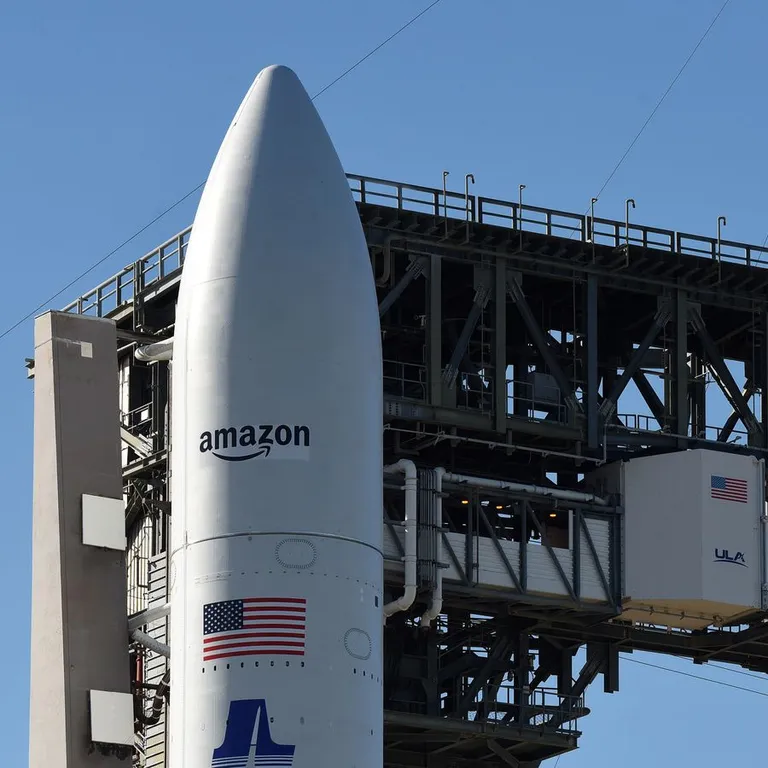Australian telcos, government, the NBN and individual consumers will be the beneficiaries of Amazon’s long-awaited launch of its first Project Kuiper satellites. Twenty-seven low-earth orbit (LEO) satellites were released into space from a United Launch Alliance Atlas V rocket early Tuesday AEST. The launch took place at Cape Canaveral, Florida.
Amazon’s constellation of 27 satellites is no match for Elon Musk’s Starlink which has deployed more than 8000 satellites since 2019. Amazon is a humble entrant. But it plans to grow its low-orbit satellite fleet to 3,200, which, while less than half of Starlink’s current deployment, will provide an alternative and competition to countries, businesses and consumers.

Telstra, Optus, Vodafone and the National Broadband Network continue to develop their links with satellite providers and, over time, may be in a stronger negotiation position due to increased competition from Amazon. In a paper dated March 2024, Amazon Australia said Kuiper satellites would cover the entire continent. “Project Kuiper will cover the Australian continent, providing broad geographic availability, high-capacity broadband, and affordable equipment and service plan,” Amazon said.
“We support the use of LEO satellite (LEOSat) networks as an alternative technology in the delivery of the Universal Service Guarantee (USG), and for the better delivery of advanced communications networks and solutions for regional, rural, and remote Australia generally.” Project Kuiper satellites will travel at altitudes of 590km, 610km, and 630km, and connect to customer terminals and ground infrastructure to create a high-capacity global broadband network. The Financial Times reports that Kuiper satellites will target the same retail, business and government customers that Starlink serves.
With the initial satellites now in orbit, it wants to have its internet service up and running by year’s end. But it says Amazon has experienced persistent manufacturing delays and had launched only two protype satellites ahead of this week’s launch. Starlink, in contrast, had flown more than 7000 spacecraft since 2019 and currently served more than 4.
5 million customers and controls more than 60 percent of all satellites in orbit, says The Financial Times. Additionally, there’s Mr Musk’s experience in launching rockets into orbit with Space X. Starlink has technological advantage, as well as years of experience and a well-established market which will take even Amazon years to match.
Nevertheless, there are moves in Australia to get aboard with the NBN believed to have a cut deal with Amazon . There remains concern as to whether Kuiper can reach its target of launching half of its satellite fleet by July this year. Not everything has been going to plan with Starlink’s collaboration with Australian telcos.
Recently US regulatory hurdles delayed the launch of Optus’s Starlink satellite that will deliver direct-to-handset services to Australians. At a government level, Mr Musk’s collaboration with US President Donald Trump has made some countries nervous about the reliability of Starlink in conflicts, for example in Ukraine following President Trump’s attacks on Ukraine president Volodymyr Zelenskyy..
Technology

Amazon Takes On Musk’s Starlink, Launching 27 Satellites

Australian telcos, government, the NBN and individual consumers will be the beneficiaries of Amazon’s long-awaited launch of its first Project Kuiper satellites. Twenty-seven low-earth orbit (LEO) satellites were released into space from a United Launch Alliance Atlas V rocket early Tuesday AEST. The launch took place at Cape Canaveral, Florida. Amazon’s constellation of 27 satellites... Read More















